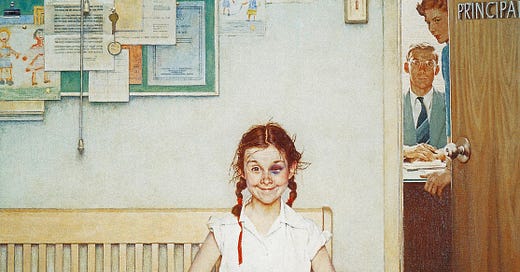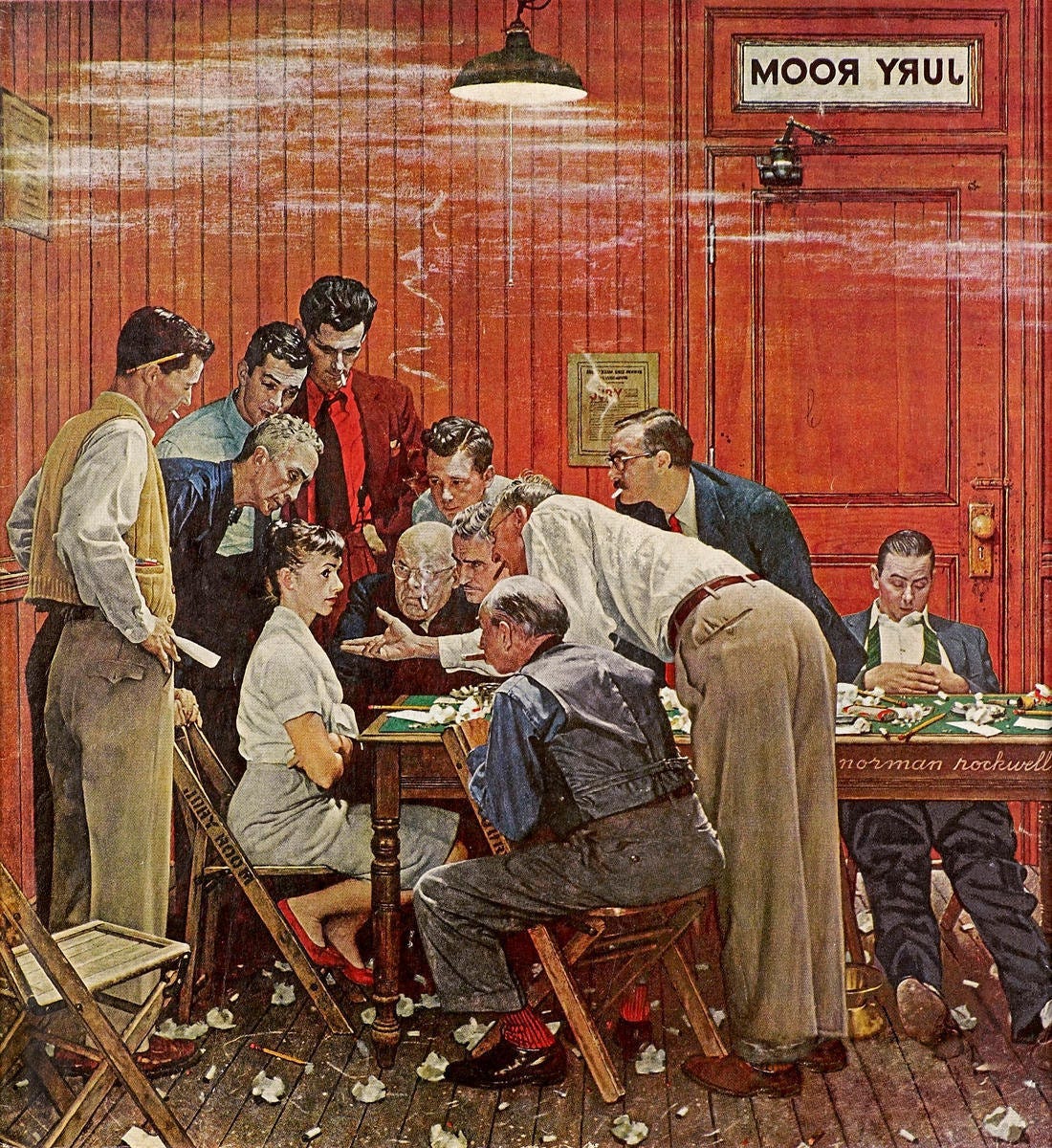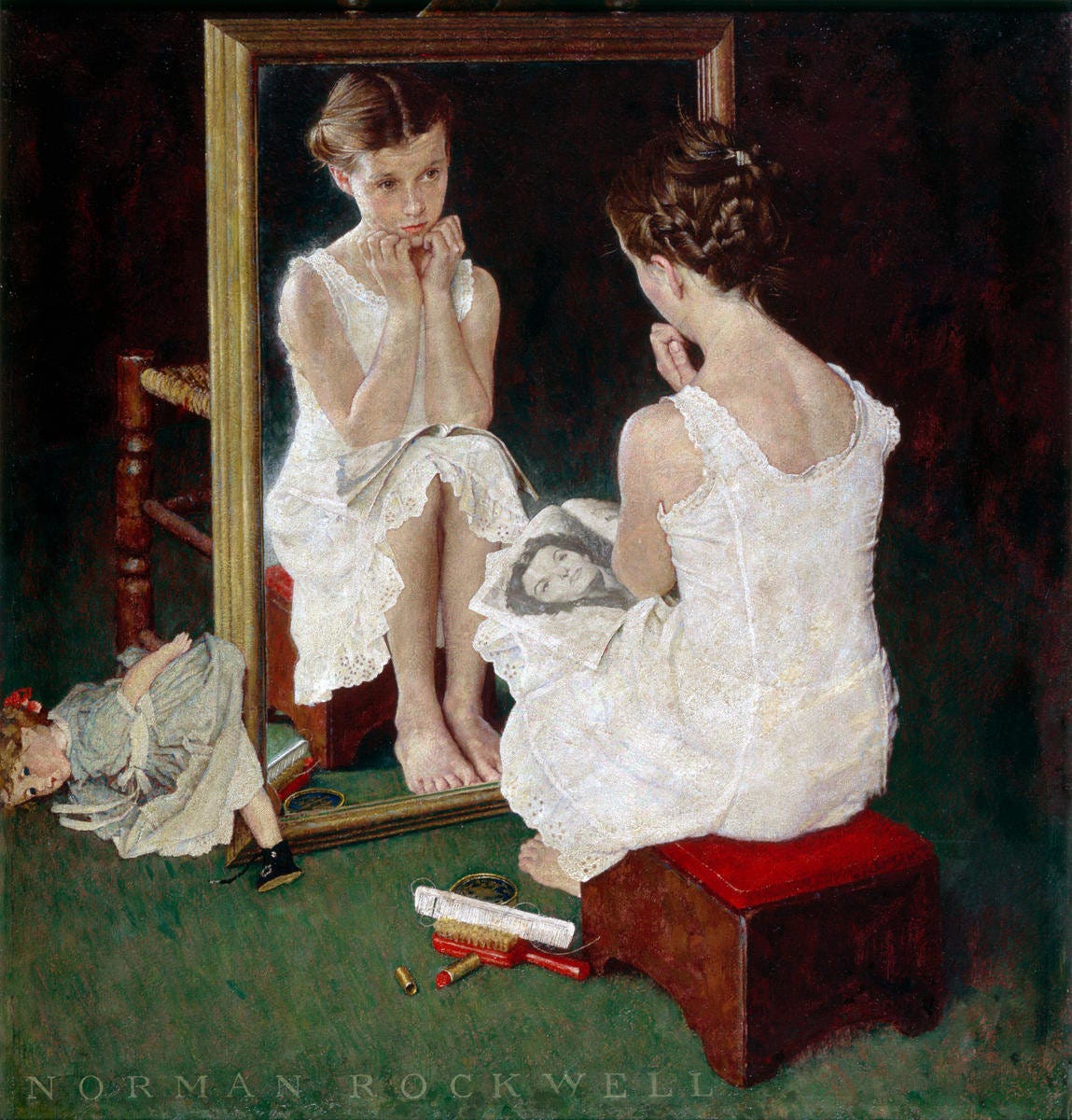Where your inner critic comes from and what to do about it (part 2)
Last week, I told you that inner critics are scary on two different levels.
Inner critics are scary because of the content of what they’re saying — all those self-doubting, self-critical, second-guessing whispers.
AND inner critics are scary because it can feel like there’s something wrong with you for even having an inner critic in the first place — “What’s wrong with me? Why can’t I just like myself and believe in myself??”
So there are two layers of fear.
The Layer 1 fear is: “I’m doing it wrong.”
(^ This comes from the content of what your inner critic is saying.)
And the Layer 2 fear is: “Something is wrong with me for constantly thinking that I’m doing it wrong.”
(^ This comes from your own thoughts ABOUT the fact that your inner critic even exists.)
And, I told you that these double layers of emotion are incredibly common.
And that, any time I see these double layers of emotion in my clients, I like to work from the outside in and tackle Layer 2 first.
So today, I’m going to tell you why there’s nothing wrong with you for constantly thinking that you’re doing it wrong.
Because I’m going to tell you where your inner critic comes from — how it formed and the forces that formed it.
And here’s the top-line answer before I get into all the details—
Inner criticism isn’t a sign that anything is wrong with you.
Inner criticism is just a sign that you’re using someone else’s compass instead of your own 🧭
Let me tell you what I mean by “using using someone else’s compass”…
With the assistance of a few Norman Rockwell paintings.
All three of these paintings depict what I call a Compass Conflict 🧭🤜 🤛🧭
This one is called The Holdout—
This one is called Girl at Mirror—
And this one is called The Shiner—
All three of these paintings depict a moment when one person’s compass comes into conflict with another person’s compass 🧭🤜 🤛🧭
In The Holdout, the conflict is direct.
The woman’s compass wants to decide the verdict in one direction.
The mens’ compasses all want to go in the other direction.
And the men are getting in her face and trying to persuade her to do what they think she should do.
In this Compass Conflict, one compass is directly telling the other: “You’re doing it wrong!”
In Girl at Mirror, the conflict is more implicit.
There’s no direct confrontation.
The girl is by herself — there’s no one else in the room, getting in her face and telling her she isn’t pretty enough.
Instead, there’s just an implied standard.
There’s just the implication that, because this picture is in a glossy magazine, glamorized, famous, and broadcast to everyone…
There’s the implication that: This is what’s right. This is what good looks like.
And there’s a quiet, implicit conflict between that standard and what the girl actually looks like.
There’s a Compass Conflict between the magazine editor’s compass and the girl’s compass.
In The Shiner, the conflict comes with consequences – because one of the compass holders has direct power over the other.
This is not a Compass Conflict between peers, like in The Holdout.
It’s also not an implicit Compass Conflict between a societal standard and an individual reality, like in Girl at Mirror.
This is a Compass Conflict between a child and adults at school — a setting where adults (naturally!) have power over the children.
This feisty little girl has already followed her compass and gotten into a schoolyard brawl…
And she’s now experiencing consequences for doing so, because not only do the adults’ compasses say something different than hers does…
But it turns out those adults can haul you to the principal’s office and call your mom when you go against their compass.
Not only do these paintings show 3 different types of Compass Conflicts… 🧭🤜 🤛🧭
But they also show 3 different ways a Compass Conflict can be resolved ✅ ❌ 🤷🏻♀️
1: “I’m right. They’re wrong.” ✅
In The Shiner, the young girl is resolving the Compass Conflict in the direction of: I’m right. They’re wrong.
Sure, she’s been dragged to the principal’s office…
But look at that impish grin on her face :)
I don’t think she’s too cowed by this display of authority.
I think she still thinks she’s right 😁
2: “They’re right. I’m wrong.” ❌
In Girl at Mirror, the young girl is resolving the Compass Conflict in the direction of: They’re right. I’m wrong.
She’s not thinking, “Sure, everyone else says this woman in the magazine is beautiful, but I don’t think she is.”
She’s thinking, “She’s pretty. I need to look like her in order to be pretty myself,” and she’s using the comb and makeup by her feet to make herself look that way.
3: “I’m not sure.” 🤷🏻♀️
In The Holdout, it’s not clear yet how the young woman is resolving the Compass Conflict. She’s not sure. 🤷🏻♀️
Will she be persuaded? Will she hold out?
Only time will tell.
But tensions feel pretty high while the conflict continues.
Now here’s the thing about Compass Conflicts like these…
You have experienced hundreds, if not thousands, of Compass Conflicts throughout your life.
Parents, teachers, and bosses telling you what to do when you feel like doing something else…
Peer pressure, both subtle and overt, from your friends and colleagues…
The endless bombardment of messages from books, movies, TV, advertisements, and the media…
You can barely step out of the house without running into a conflict between your compass and someone else’s 🧭🤜 🤛🧭
Compass Conflicts are not inherently bad, or insidious, or traumatic.
They are a normal part of being a human in a society.
You cannot avoid them. They are inevitable.
But here’s why completely normal Compass Conflicts can turn into an insidious inner critic.
As you were growing up, you ran into tons and tons of Compass Conflicts all day long.
And kids tend to resolve Compass Conflicts in the direction of: They’re right. I’m wrong. ❌
(Especially so for little insecure over-achiever kids, like myself :)
Resolving Compass Conflicts in the “They’re right. I’m wrong.” direction is 100% normal for kids.
Adults are big and authoritative and they seem to know what they’re doing.
Adults can deploy consequences when you follow your own kid compass too much, to really make it clear that they’re right and you’re wrong.
It’s probably even evolutionarily advantageous for kids to resolve Compass Conflicts in the “They’re right. I’m wrong.” direction.
The kids who kept resolving Compass Conflicts as “I’m right. They’re wrong.” probably wandered away from the group and didn’t survive.
And, the next thing I want to tell you…
Is that even though defaulting to “They’re right. I’m wrong.” as a kid is 100% normal, developmentally appropriate, and probably even net-net advantageous…
When you get a ton of reps doing that…
And you get into the habit of resolving Compass Conflicts in the “They’re right. I’m wrong.” direction all the time…
You also get into the habit of using someone else’s compass instead of your own, all the time.
And when you use someone else’s compass instead of your own, that creates an inner critic.
Because when you use someone else’s compass…
YOUR compass doesn’t go away.
It’s still sitting there, beaming out its message to you, as loud and steady as ever.
The only difference is: Now, you distrust your own compass.
So you question it. And criticize it. And doubt it. And roll your eyes at it. And get frustrated at it. And tell it to shut up. And tell it to get its shit together. And tell it to just grow up and do what’s right.
And all of that distrust aimed at your own inner compass — that’s your inner critic.
Inner criticism is not a sign that anything is wrong with you.
Inner criticism is just the byproduct of using someone else’s compass instead of your own 🧭
So what are you supposed to do now, when you realize this is happening in your brain?
I’m going to go into full detail on that tomorrow, in Part 3.
But for today, let me give you the very first step:
Every time your brain starts criticizing you about something…
I want you to turn around and ask it: Brain, whose compass are you using right now?
And just see what your brain says.
Often, that question alone is enough to shake your brain up and jumpstart it into using your own compass instead of somebody else’s.
So try that out for today.
And tomorrow, I’ll tell you more about how to tap into, trust, and consistently use your own compass :)
Tapping into and building trust in your own inner compass is the critical skill you need to build the life you actually want.
You can’t build it from someone else’s blueprint.
You can only build it from your own.
If you want some spot-coaching to help you tap back into your own compass, you can grab a free coaching session with me anytime you like.
And if you want to get to work actually building the life you want in 2025…
Come talk to me and let’s put together a plan for doing just that.
What my clients have to say…
“I have a healthier internal monologue. I still have an internal monologue, but it's a positive one.
And there are moments where I slip back into some of the negative thought cycles I used to be in, and it's almost like I can hear—
‘Pooja would tell me to stop assuming that everyone thinks I'm annoying. And Pooja would tell me to advocate for myself, because what's the worst that could happen? And Pooja would tell me to take a break and acknowledge that thought, but not get sucked into it and move on with my day.’
There's a second layer now of my internal monologue that is the healthy helper, which I developed from coaching, that just stops me from ever regressing too far into those negative thoughts.”
—Client | Head of Business Development at MedTech Company
Did you know I have a full table of contents, where all my work is categorized by topic, so you can easily find what you need right now? Check it out below! :)
As part of my mission to share coaching tools as widely as possible, my newsletter is completely paywall free and available to all.
You can support this publication (and make my day!) by subscribing and sharing it with anyone you think would find it helpful. Thank you for being here :)
⬅️ Part 1 || Part 3 ➡️
💻 Website | 📸 Instagram | 👩🏻💻LinkedIn | 🎧 Podcast | 💌 Newsletter | 👋🏽 Free resources






